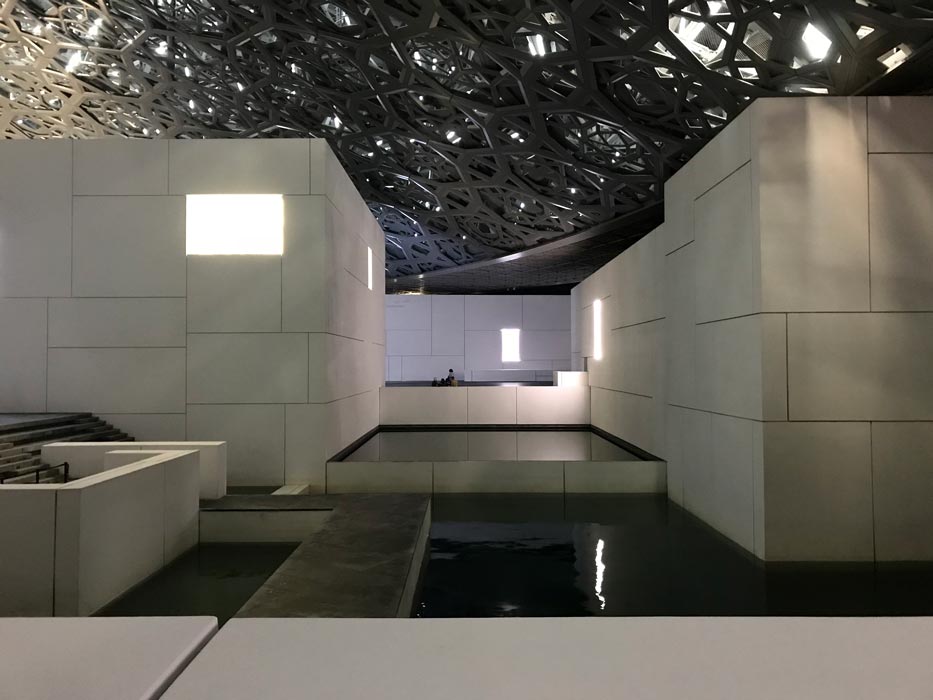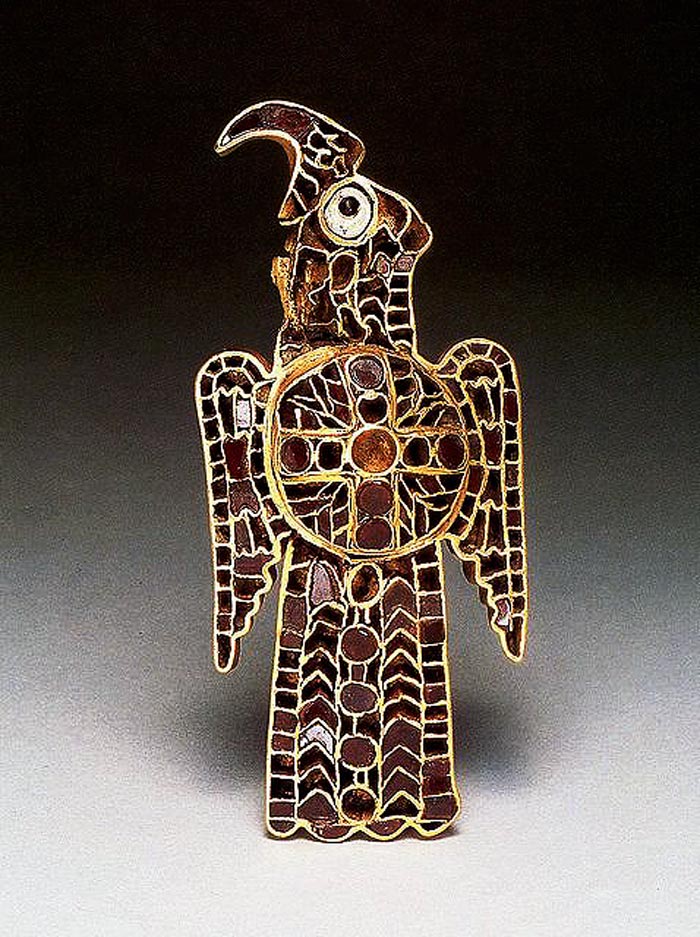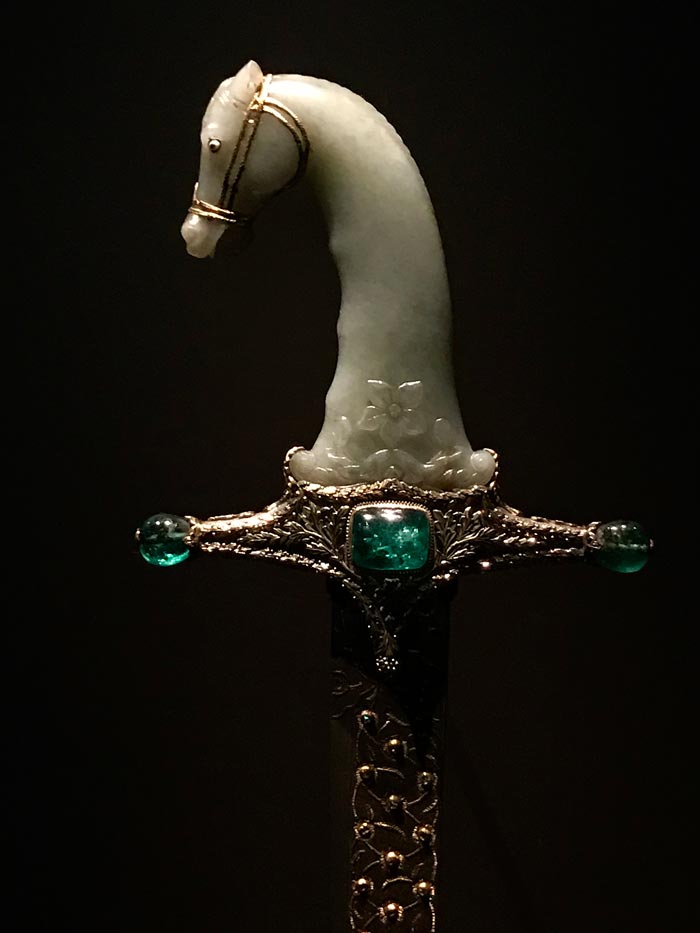Jewelers routes
22 January 2018
Share
Jewelry at the Louvre Abu Dhabi
There has been much talk of Jean Nouvel’s extraordinary achievement, but less has been said about the works exhibited there. And what about the jewelry?
The museum’s ambitions – showing what the world has in common, removing frontiers, fostering dialogue between cultures and highlighting diversity – are illustrated by the juxtaposition of 600 paintings, photos, sculptures, and objects within the space. But there are only a few items of jewelry, in which so far little interest has been shown. The first gallery features two very simple necklaces, formed by rows of irregular pearls – an illustration of ancestral exchanges between today’s United Arab Emirates and Persia, India and Mesopotamia.
Dedicated gallery: “The First Great Powers”
Plunged into darkness, this gallery brilliantly highlights five exceptional pieces: a breastplate in the shape of a crescent moon, a bracelet graced with two lion heads, a rectangular pendant with a double animal head, a belt buckle with two loops and another bracelet featuring a plant motif. This grouping of Celtic, Chinese and Achaemenid jewelry highlights a number of similarities across civilisations over several centuries: the desire to display status through very pure bright yellow gold, animal motifs as symbols of power and the sophistication of techniques such as the use of lost wax casting, dating back 6,000 years.
Domagnano’s fibula, a masterpiece
This 5th century pin, allowing the garment to be fixed on the shoulder, was one of the earliest acquisitions of the Abu Dhabi Louvre (to the chagrin of the original Louvre). This major piece, discovered in Italy at the end of the 19th century, is emblematic – the result of an incredible melting pot of influences. Produced in the 5th century during the invasion of the Roman Empire by Barbarian tribes from Eastern Europe, it associates the figure of the eagle, the symbol of imperial power in Rome, with a Christian cross in the centre. The cloisonné gold – a technique that also appeared under the influence of the Barbarian tribes – is adorned with garnets from Gujarat, India.
Finally, decorative art lovers should not miss the gallery dedicated to “The art of war” with its abundance of sabres, armour and daggers made in India or in the Ottoman Empire. Their magnificent sheathes are inlaid with gold and precious stones. In the future, the Louvre Abu Dhabi will benefit from new acquisitions and loans. We can only hope that they will satisfy the obsession of the french jewelry post…
Another jewel in Abu Dhabi, the Sheikh Zayed mosque























